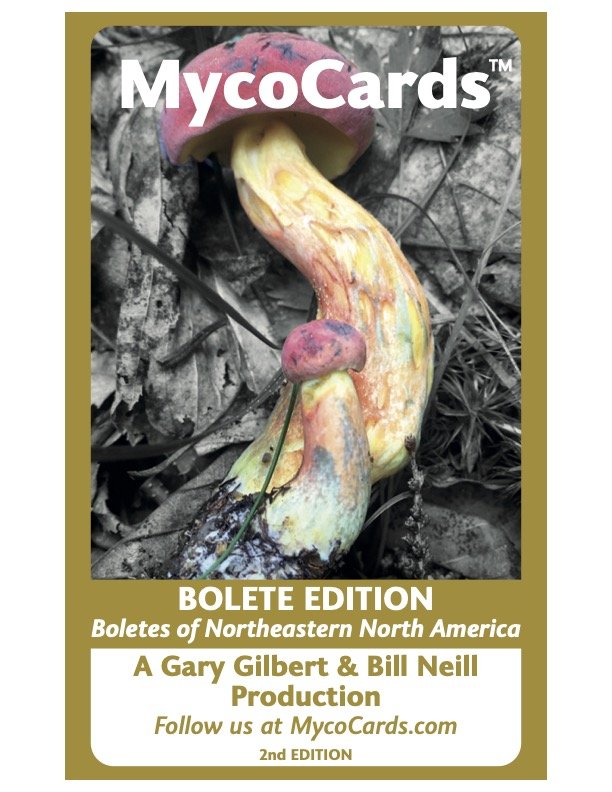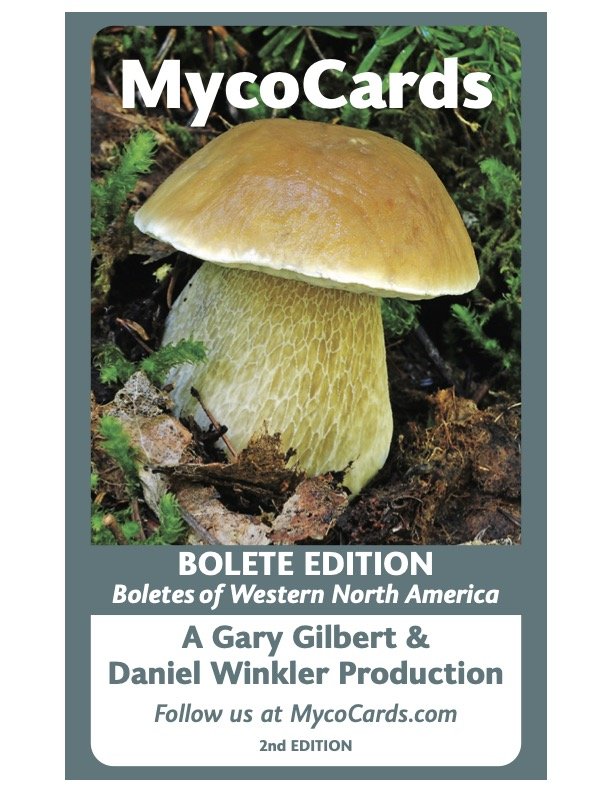MycoCards
MycoCards are tarot card-sized laminated flashcards created to help people identify mushrooms accurately and in a totally novel format that does not exist elsewhere. MycoCards are not a game, rather they are a portable alternative to mushroom identification field guides. Most guides describe 5 to 15 species while MycoCards provide 50 to 55 species with up to date detailed descriptive information in bullet-point format for easy reference.
Select the product to learn more information about it:
Boletes of Northeastern North America
Boletes of Northeastern North America contains 55 species almost all of which are edible. Boletes have pores under their caps, and not gills. They can be very brightly colorful, plentiful in the woods, and highly prized. Many display staining reactions when the pores are bruised or the flesh of the cap or stem. The Bolete family fascinates many of us from the bright yellow pores of the Aureoboletus genus to the perplexing Tylopilus who have distinguishing features, as long as they are young. When older they are mostly all perplexing brown colors and ID is even more difficult. The very common Suillus and Leccinum genera are represented as well as the only truly poisonous species Boletus huronensis. There are far more Bolete species in the east and that is why this deck is focussed on the Northeast primarily. Many of the species are also found far down into the Southeast of the US also. Welcome!
Boletes of Western North America
Boletes of Western North America contains 55 species of the highly varied western species and genera. Boletes have pores under their caps, and not gills. They can be very brightly colorful, plentiful in the woods, and highly prized. Many display staining reactions when the pores are bruised or the flesh of the cap or stem. This deck covers most of the tasty and robust Butter Boletes, the Butyriboletus genus, as well as a very good representation of many of other genera found west of the Rockies. Welcome!
Amanitas of Eastern North America
Amanitas of Eastern North America now contain 52 species of this highly colorful genus famous for having a myriad of identification features, the most important of which is the universal veil which manifests itself in a variety of ways. Many of this genus are quite poisonous so we do not mention that aspect of them out of a respect for caution. Inserted into this deck is an information sheet explaining their breakdown into 7 sections. Often one can only define a given specimen to section because some of the subtle macroscopic identification features have been lost in handling or due to the environment.
Lactarius of Eastern North America
Lactarius of Eastern North America contains 55 species of these latex-producing and often perplexing Lactarius and Lactifluus species. The deck is organized in alphabetical order based on species name, not genus, due to the recent breakdown of Lactarius into two large genera. Many of these fungi are edible, but some are simply unknown. It is best to find a variety of ages of any specimen for identification because many of them they tend to age brownish and dry up so they lack latex and bruising or staining features with age.





















